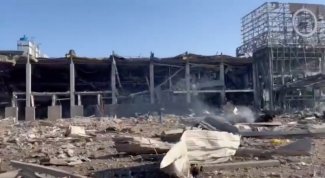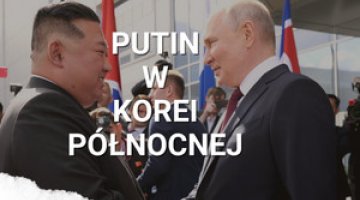Russia’s attack on Ukraine: day 27

In its morning announcement, the General Staff of the Armed Forces of Ukraine returned to providing general information about the military situation, while limiting its reports on the failures and problems the aggressor has been having with replacing its losses and ensuring logistic security. The previous terms for the directions of the Ukrainian army’s defence, which are derived from historical names for areas of Ukraine, have been replaced with conventional geographic directions: north-east, east and south-east. The Ukrainian army is now conducting a defensive operation in all directions, and the enemy has intensified its shelling of localities in the combat zones, and increased the amount of air strikes. For the first time, the Ukrainian army communiqué did not repeat its claims of the enemy troops switching to defence and the Ukrainian forces offering counter-attacks, which had been constant over the last week. After taking into account the information coming from the regional military administrations and local authorities, the military situation on the 27th day of the war can be described as follows.
In the north-eastern direction, the Ukrainian Armed Forces’ main efforts have been focused on defending the border with Belarus and stopping the enemy’s attacks on the right bank of the Dnieper, in the area of Malin in Zhytomyr oblast (a road junction on the Kyiv-Sarny route, 95 km northwest of Kyiv), and on the left bank of the Dnieper towards Kyiv. Clashes have taken place in the villages on the so-called Zhytomyr highway (the M06 motorway running westward from Kyiv). The defenders have strengthened their positions in the towns of Irpen and Moshchun, bordering Kyiv from the north-west, while the enemy has been boosting its forces on the western bank of the river Irpen and regrouping. On 22 March, the Russian forces continued shelling the town of Browary. The defence of Chernihiv is underway: the aggressors bombed a bridge over the river Desna on the outskirts of the city, and street fighting is taking place in the town of Trostyanets in Sumy oblast.
In the eastern direction, the Ukrainian army has halted an attack from the direction of Kharkiv (the number of shells landing in the city has fallen to 32 per day) towards Slavyansk, and another (with some of its forces) on the town of Lozova on the south-western border of Kharkiv oblast (120 km south of Kharkiv itself). In the evening of 22 March, Russian forces destroyed the station and railway junction at Pavlohrad (50 km south-east of Lozovo) in a rocket attack. The town of Izyum is encircled yet still defending itself.
The aggressor’s troops in Donbas, which have been attacking westwards, were halted at the rise at Popasna in Lugansk oblast (on the border with Donetsk oblast) and at Kurakhove in the Donetsk oblast (35 km west of Donetsk). In the north of Donetsk oblast, units of the Russian 150th Mechanised Division have reached the border of the town of Yampil, and were stopped in the town of Torske, which borders on it from the north. Severodonetsk and the neighbouring towns of Rubizhne and Lisichansk came under fire the next day. The defence of Mariupol is continuing (the city is coming under attack from land, sea and air), as are those of Avdiivka and Mariyinka. The Ukrainian army is holding back the enemy’s advance towards Zaporizhzhia.
In the south-east direction, the Ukrainian forces are defending Mykolayiv (the city is being shelled by heavy rocket artillery) and towns in Mykolayiv oblast, and are preparing to defend and repel sea & air attacks by the enemy at Ukrainian navy bases and ports in the so-called Black Sea Operational Zone (in Odessa oblast). The enemy’s advance northwards is being halted, in the direction of Kryvyi Rih (minefields on the outskirts of the city have led to the destruction of a Russian sabotage and reconnaissance group), as well as in the area of Novovorontsivka in Kherson oblast; the Russian move northwest has also been stopped, in the area of Oleksandrivka in Mykolaiv oblast.
The Ukrainian General Staff has given more approximate data on the Russian losses, which since 24 February have amounted to 15,600 soldiers (without specifying the number of killed, wounded or captured), 517 tanks, 1578 armoured vehicles, 267 air defence systems, 101 aircraft (105 according to the Ukrainian Air Force), 124 helicopters, 1008 wheeled vehicles, 4 vessels, 70 fuel tanks and 42 unmanned aerial vehicles. According to the Russian Ministry of Defence, the Ukrainian losses include 184 planes and helicopters, 246 unmanned aerial vehicles, 189 anti-aircraft missile launchers, 1558 tanks and other armoured combat vehicles, 156 rocket artillery launchers, 624 guns & mortars, and 1354 wheeled vehicles.
The Russian Ministry of Defence has announced the date of the spring and summer military call-up, which will run from 1 April to 15 July. The registry offices are cooperating with Russian security authorities to search for anyone who is attempting to evade registration and military service. In a statement by the military authorities in St. Petersburg, it was admitted that considering the psychological war being waged by the enemy among the Russians, fear of joining the army was growing, and “an increase in anti-state sentiment” had been recorded. The statement emphasised that conscripts called up for military service would not be sent to Ukraine.
On Tuesday, 1100 residents of Mariupol were evacuated from Berdyansk to Zaporizhzhia, and 5926 people left Mariupol via private humanitarian corridors. Ukrainian Railways confirmed that evacuation trains would run from Kharkiv and Kyiv to Lviv and Ivano-Frankivsk, from Odessa to Uzhhorod, and from Kramatorsk to Lviv. Agreement was made to run nine humanitarian corridors on 23 March, including from Mariupol and towns in Luhansk, Zaporizhzhia and Kyiv oblasts. According to estimates, there are still around 100,000 people left in Mariupol. All attempts at evacuation from this city are constantly threatened by Russian blockades and shelling, as are transports to help the city from outside. On 22 March, the Russians abducted drivers and employees of the State Emergency Service from one such convoy. The Greek foreign minister Nikos Dendias expressed his readiness to lead a humanitarian mission to Mariupol to help civilians, including the ethnic Greek community living there.
The head of the territorial defence centre of Dnipro city, Hennady Korban, called on the Ukrainian government to immediately purchase several thousand wheeled vehicles with a lifting capacity of 5 to 10 tonnes, equipped with makeshift armament. These will be used to conduct combat operations based on forays by armed vehicles, during which Russian fuel depots and supply columns will be destroyed. Korban’s appeal proves that the territorial defence is devising ever more original ways to operate, but it requires additional financial outlays from the state budget.
Russia is escalating its use of terror against civilians in the occupied territories. There are more reports of the looting of shops and apartments, murders and rapes. Brutal methods are being used to suppress public resistance in the occupied areas. Russian soldiers have opened fire and used tear gas on the inhabitants of Kherson, who have been demonstrating against the occupation almost daily. More representatives of local authorities have also been kidnapped.
On 22 March President Volodymyr Zelenskiy spoke online to the parliament of Italy. He called for the country to stop functioning as a resort for “Russian murderers who are well known to the Italian government”. He warned Europe and the world against the spectre of famine, stressing that Ukraine was one of the largest exporters of grain in the world. In a speech to the Japanese parliament on 23 March, Zelenskiy called for an embargo on trade with Russia, and warned against the risk of radioactive contamination should Russia continue its military operations. In turn, foreign minister Dmytro Kuleba sharply criticised ‘Putin-understanders’ in Germany, whom he equalled with pilots of Russian airplanes killing Ukrainian civilians.
On 23 March, the Ukrainian government simplified the procedures for clearing humanitarian aid at the border: suppliers will only have to fill in one declaration on the spot, indicating the sender, recipient, place of unloading and the type of aid. It also removed restrictions on the list of goods recognised as humanitarian aid: all legal products can now be transported in this capacity. 14 EU countries have already lifted authorisations for humanitarian aid carriers (including Poland, Slovakia, Austria, Hungary, Germany, Lithuania and Italy). Many EU countries have exempted Ukrainian shipping agents from road tolls. According to the Ukrainian Border Guard, over 15,000 vehicles carrying humanitarian aid have entered Ukraine since the start of the aggression.
According to the Border Guard of the Republic of Poland, on 22 March, 31,000 refugees entered Poland from Ukraine (an increase of 3.3% compared to 21 March), making a total of 2.175 million since the beginning of the invasion. In this period 285,000 people have crossed the border in the opposite direction.
Commentary
- The change from the previous seven or eight main operational directions to just three is a logical result of the shortening of the Ukrainian lines of defence. Although fighting continues in many localities in the Chernihiv, Sumy, Kharkiv, Luhansk and Donetsk oblasts, the clashes are taking place ever deeper behind the Russian troops’ lines, and the Ukrainian units can no longer organise their own defence on a regular basis. In the north-east, the main line of Ukrainian defence is Kyiv; and in the east, the borders of Poltava & Dnipropetrovsk oblasts and the vicinity of Zaporizhzhia. In the southeast, the line of defence remains relatively stable, but it is steadily shifting north between the Dnieper and the Bug.
- After the aggressor’s units attacking southward from the Kharkiv region reached the border of Kamianka (south of Izyum), and those attacking north from the Donetsk region reached the town of Yampil, the corridor through which the Ukrainian troops defending themselves in Luhansk oblast (mainly around Severodonetsk) could retreat has narrowed to 50 km. This means that the units passing through it will be within range of enemy artillery. It cannot be ruled out that the Russians are trying to ‘kettle’ the Ukrainian forces in that area, who may include half of the entire Ukrainian group operating in the Donbas.
- The Ukrainian army command has not yet commented on the reports that have been appearing in the media since Tuesday about the successful surrounding of the Russian forces located north-west of Kyiv in Irpen, Bucha and Hostomel. According to official Ukrainian data, Irpen currently marks the limit of the Russian positions north-west of Kyiv, but clashes for the town are still taking place. The remaining towns are deep behind Russian lines.
- The Russian army is increasingly resorting to bandit tactics: the aggressor has been destroying food warehouses, and attempts to evacuate people or provide them with humanitarian aid are not only being sabotaged, but also being stopped by force. The Ukrainian destruction of the bridge over the Desna river will not constitute a significant obstacle for the Russian troops; they still have not captured the town, but it prevents the inhabitants from receiving humanitarian aid or being evacuated. The residents of Chernihiv may – as has happened in the case of Mariupol – be forced to leave for Belarus or Russia.
- There are more and more signs of problems with conscription in Russia, related to the growing anti-war moods among young people. This means that the ubiquitous pro-war propaganda has not guaranteed the public’s unconditional support for the Kremlin’s policy, or that society will recognise the attack on Ukraine as justified. The conscripts’ reactions also demonstrate the effectiveness of Ukrainian psychological warfare, which transmits information about the true picture of the war to the Russian people. The Russian military’s announcements are a response to Putin’s irritation at soldiers from the autumn call-up being sent to Ukraine during the initial phase of aggression. The losses suffered resonated widely in Russian society, and undermined the reputation for professionalism of the high command, which decided to send inexperienced and untrained troops to fight against a highly motivated adversary.
- Ukrainian politicians have been levelling increasingly harsh accusations against those Western partners who are resisting a policy of containment towards Russia and supporting Ukraine in a more determined fashion. In his speeches to Western parliaments, Zelenskiy has accused the world of indifference, procrastination, and an attempt to maintain channels of dialogue and business with the aggressor. At the same time, he has resorted to historical parallels, reminding Israel that Ukrainians saved Jews during World War II, and accusing the Germans of building a new wall in Europe financed by trade with Russia, and of failing to draw the appropriate conclusions from World War II. The president has not only emphasised the humanitarian tragedy of Ukraine, but also pointed out the consequences the war may have for Europe and the wider world: security risks, including the nuclear threat, and also the spectre of widespread famine. The harsher rhetoric on Kyiv’s part is aimed at unifying Western public opinion and putting pressure on governments to grant more support (military and economic) to Ukraine and expand their sanctions against Russia.




